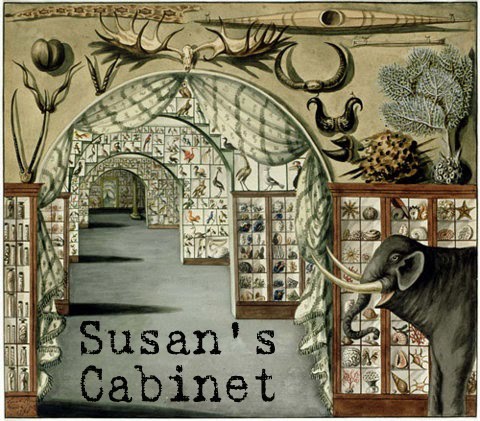Technically, San Antonio (the 7th largest city in the U.S.) is within a day’s drive of Huntsville
The next morning I was rested and ready to explore. I had never been to this city before. I immediately feel in love with San Antonio Alamo .
We all loved the River Walk! This "American Venice" is one-story below street level and is a great place to walk in the day and at night. Some of the bald cypress trees lining the walk are several hundred years old. Others were planted by the WPA, which also built about 3 miles of walkways and 20 bridges. Since then many more miles have been added so that it stretches to the missions, museums, and historic neighborhoods.
 |
| Casa Rio - the River Walk's oldest restaurant, opened in 1946 |
 |
| The Arnseon River Theater The amphitheater seating is on one side of the river and the stage is on the other. |
 |
| I thought a restaurant was piping out jungle sounds but it turned out to be birds like this one in the trees. |
 |
| The boat tour turns around at this dead end by the mall |
Apparently, January is the perfect time to tour Mission San Antonio de Valero, aka the Alamo, because it wasn't crowded at all. There are only two of the original buildings left here - the chapel and the long barrack (the quarters and offices of the Spanish missionaries). I appreciated the fact that the audio tour and the signs make it clear what was there and what wasn't there at the time of the Battle of the Alamo and also who built what parts and when. For example, although construction began in 1758, the chapel did not have a roof until the U.S. Army installed a wooden one in the 1850's. The current barrel-vaulted cement roof was built in 1921. (The Spanish had planned for the church to have three-stories and to be topped with a dome, but it was never completed.)
 |
| A view you don't usually see in pictures - the back of the church at the Alamo |
 |
| A "new" building at the Alamo, 1936 |
 |
The
|
The San Antonio Museum of Art in the historic former Lone Star Brewery complex is on the River Walk. It has a great collection spanning all of history, and a very cool building.
The Briscoe Western Art Museum is also on the River Walk and it occupies San Antonio's first Public Library building, built in 1930 (and a newly constructed pavilion). Their artifacts include a sword that belonged to General Santa Ana and a saddle that belonged to Pancho Villa. Both of these museums are free on Tuesday afternoons/evenings, which is when we went.
On my own, I got to walk all over downtown (including a self-guided architecture tour), see all the missions on the Mission Trail, go on a Rio San Antonio narrated cruise, check out the view from the Tower of the Americas, drive around hunting out interesting architecture and odd attractions (such as the pig shack), visit the Cemeteries of Old San Antonio, tour a couple of houses in the King William historic district, and check out several historic churches. Four full days in the city was not nearly enough time. I need to go back because I still have a lot more on my list to see.
One of my favorite things was being able to see five Spanish missions all within a 10-mile line. (In California they are so much farther apart.) The San Antonio
 |
| Mission Concepcion, built 1755 |
 |
| Mission San Juan Capistrano, founded in 1731 The church was completed in 1756. |
 |
| Mission Espada, established in this location in 1731 The church was completed in 1756. |
I am very interested in World's Fairs, so I was excited to find out that HemisFair Park in San Antonio was the site of a 1968 World's Fair, and many of the original buildings are still standing. These include the Texas Pavilion, the U.S. Pavilion, the Mexican Pavilion, and Tower of the Americas. This is the only tower/observation deck I have visited where the fee allows you to go up as often as you like during the day of purchase. I went back again in the evening to see the sunset from the tower.
 |
| A map from HemisFair '68 |
 |
| Fountains in the modern HemisFair Park |
 |
| The Palacio del Rio hotel (foreground) was built in 202 working days for the fair. It was a record for modular construction at the time. |
 |
| Each of the 496 prefabricated rooms was put in place by crane in 46 days. |
 |
The State of
|
 |
| The United States of America Pavilion, now a federal courthouse |
 |
| United States of America Confluence Exhibit
Hall, now a judicial training center |
The King William historic neighborhood was established by prominent German families in the mid-19th century. I toured the Steves Homestead Museum and Villa Finale. The latter is full of the last owner's collections of various antiques and artifacts. The neighborhood had gone downhill, and many of the grand houses had been subdivided into apartments, when Walter Mathis bought this house in 1967. He restored it and was responsible for restoring 14 more homes and rejuvenating the neighborhood. He gave his house and collections to the National Trust for Historic Preservation before his death in 2005. A pamphlet provides a self-guided walking tour of the neighborhood - one of my favorite things to do - beautiful homes and interesting architecture.
 |
| Steves Homestead |
Continued in Part 2.






















No comments:
Post a Comment